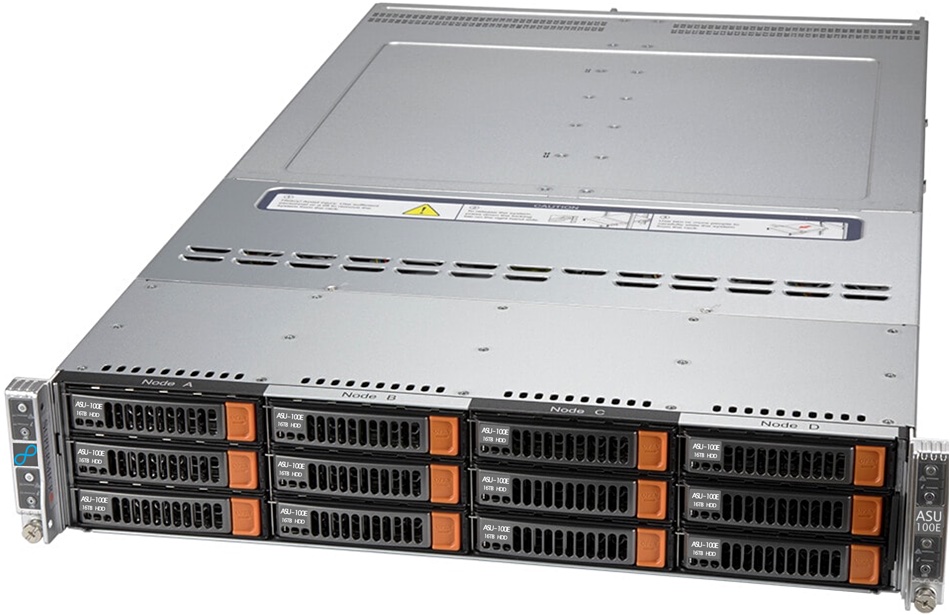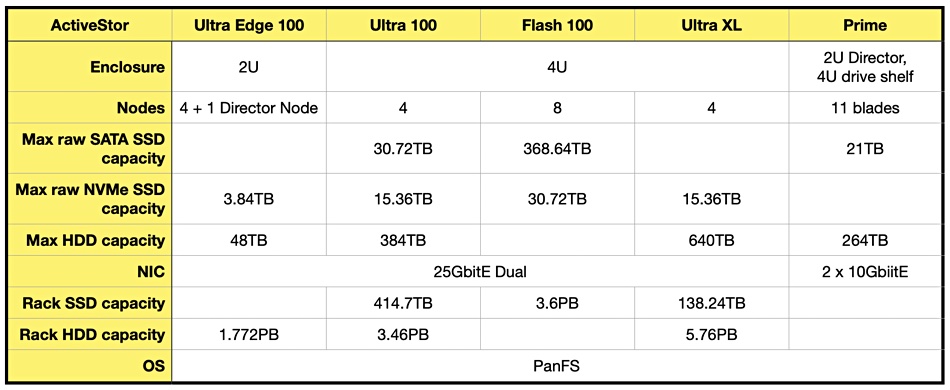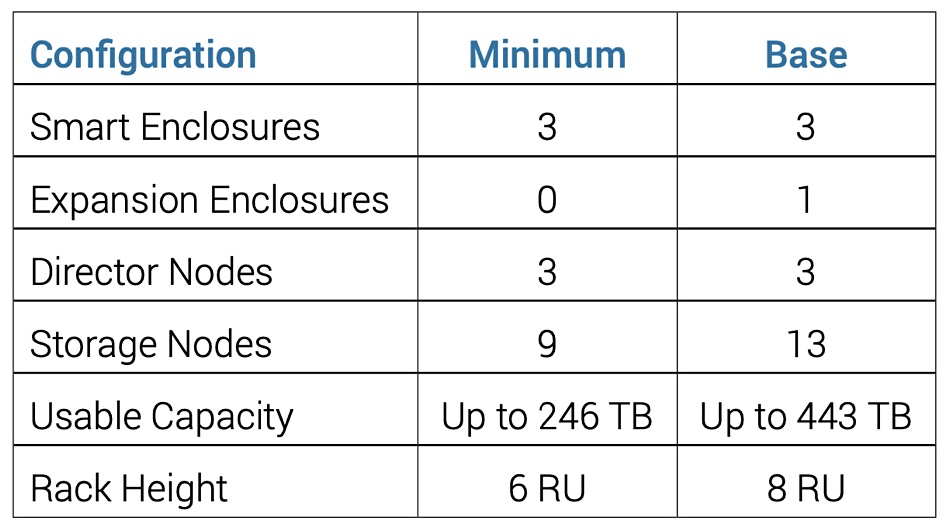Panasas has halved the size of its ActiveStor Ultra parallel file system node to make a lower-cost edge datacenter box.
The ActiveStor range runs scale-out PanFS, with NFS and SMB/CIFS protocol support, and optimized performance to match workflow needs. The OS protects against drive, node, and site failures. PanView and PanMove services provide data visibility and movement capabilities.
Tom Shea, Panasas CEO, said: “Our customers require storage infrastructures that can dynamically adapt to a changing mix of both AI/ML and traditional HPC workflows, but also have the capacity to support workflows across core data centers, remote satellite locations, and into the cloud.“

“The reduced footprint of ActiveStor Ultra Edge delivers the required performance, reliability, and ease of management that Panasas is known for, making it ideal for smaller and remote HPC datacenters.”
The Ultra 100 Edge system comes in a 2RU box and our table shows how it stacks up against the other ActiveStor systems:

There is one physical enclosure that contains four nodes and two redundant 2200W titanium-level power supplies. There are two chassis versions. A Smart enclosure has one director node and three storage nodes. An Expansion enclosure has four storage nodes. The director node processes file system metadata, coordinates the activities of the storage nodes and Direct-Flow software drivers for file access, manages membership and status within the storage cluster, and controls all failure recovery and data reliability operations. Both node types contain servers with one M.2 NVMe SSD, and run the PanFS file system. The storage nodes use 8TB or 16TB disk drives.
The system then comes in two standard configs, Minimum and Base, varying in storage capacity:

Panasas claims the system is simple to operate, needing part-time attention from a single person, and costs less than its other products. View it as an HPC storage appliance for smaller-scale workloads in the genomics, cryo-FM, and decentralized instrumentation areas.
We view Panasas, at least in the enterprise AI/ML market, as being positioned with smaller systems than DDN’s Lustre-using ExaScaler systems, although there is a fair degree of overlap. Panasas has indicated it did not favor QLC flash in the past, preferring disk. DDN has recently adopted QLC flash drives and Panasas may be evaluating them too. Generative AI workloads may be so valuable to customers that they’ll pay for QLC flash over disk.
You can access an Ultra Edge 100 datasheet here and a solution brief here.








